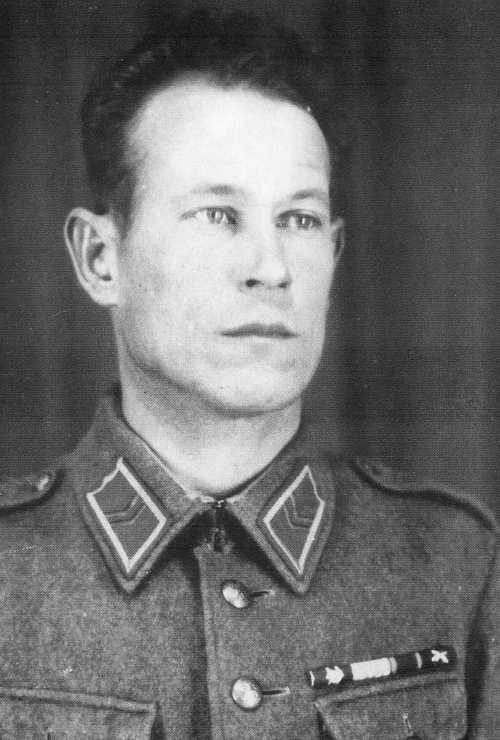
Finnish Forces
The real life "Rokka" of the "Unknown Soldier"
Viljam Pylkäs (1912–1999) mostly known for his heroic act during Continuation War, when he repelled an enemy assault, killing atleast 83 of the attackers alone. He is the model for hero character "Rokka" of the book and movies "Tuntematon Sotilas"(Unknown Soldier) Writer Väinö Linna in his letter to Pylkäs: "..you are the model for the character Rokka. As you may have noticed, i've changed events, moved them to different order and moved other men's actions to others and so on. But that's just part of the composition of a novel and only that way can seem real." Viljam Pylkäs was a farmer with wife and two kids from small town of Sakkola in Karelian Isthmus. He was trained as machinegunner during his conscript military service (1933-1934) and served in this role during the Winter War, fighting in the ErP 6 (Seperate Battalion 6) "Karelian Battalion" considered as elite unit even though it had had regular infantry training. The battalion saw extremely heavy battles defending the Mannerheim Line at shores of Vuoksi river and Taipaleenjoki river, near places where Pylkäs and most of the battalion's men lived, so they were literally defending their homes. As machinegunner, Viljam had his own important role in repelling the continuous massive enemy assaults. During the war their battalion suffered casualties of over 400 men. Pylkäs lost his farm his home among the areas that Finland had to give to USSR in the peace treaty of 1940. In the Continuation War Viljam Pylkäs served in a machinegun company of Infantry Regiment 8, in same unit with young squad leader corporal Väinö Linna, future famous writer. In 1941, Pylkäs was promoted as corporal and awarded the 2nd and 1st class Medal of Liberty. In august of the same year he was given a squad of his own after the death of corporal Lehtonen ("Lehto" in the Unknown Soldier). The Infantry Regiment 8 reached it's objectives at Svir river in january 1942 and after the battles ended the regiment dug into defensive positions on february 1, starting the stationary warfare time of the regiment. The legendary event that Pylkäs is known for, occurred at Pertjärvi in April 1942 during the Soviet spring offensives at the river. The regiment was located in middle of wastelands of southern shore of Svir river where the line consisted of nothing but seperate outposts surrounded by the wilderness. On one morning of the april, after their platoon had repelled an attack, they heard yells for help and sounds of heavy gun fire from direction of neighboring regiment the Finnish-Swedish JR 61. The main attack was focused there. Platoon leader Einari Kokkonen ("Koskela" in Unknown Soldier) told Pylkäs to go see if they were leaving their positions. There was about 100 meters to the closest outpost of JR 61. Pylkäs grabbed Suomi SMG and took pvt.Kärkkäinen with him. As they approached the OP, a guard post's leader came at them yelling that the Russians were coming right onto them. Pylkäs realized the line wasn't going to hold, told to get him more SMG magazines and went to nearby LMG nest in a good spot.The Soviets were attacking already about 20 meters away as he opened fire. He emptied up magazine after another, the JR 61 soldiers crawled in the snow passing on more SMG magazines from the rear, giving them to Kärkkäinen who was refilling magazines for Pylkäs. He kept firing until the barrel overheated and was then replaced but as he continued firing the retreating enemies got out of range. Pylkäs fired 17 submachinegun magazines in total and 83 kills was later counted to his account. Even though Pylkäs was always excellent soldier in combat he never received the Mannerheim Cross because he had serious problems with the military discipline that he didn't appriciate and was therefor constantly in trouble with his superior officers. Nevertheless his actions brought him the 4th class Cross of Liberty with swords,and as Germans heard about this incident,he was also awarded the 2nd class Iron Cross. Later during the war he participated in repelling smaller attacks and then fought in battles during the major Soviet offensive. During the retreating phase,on July 4,1944, the war ended for Viljam Pylkäs when he was wounded by a bullet that hit his arm crushing the bone.
17185 Views
1/31/2011
